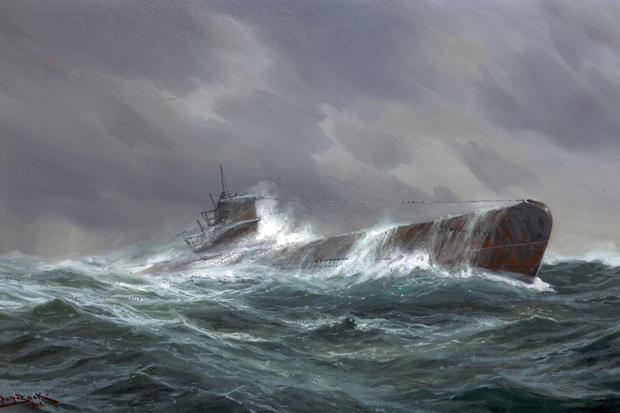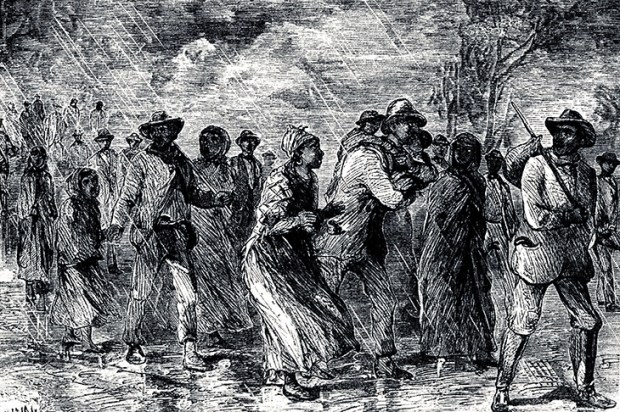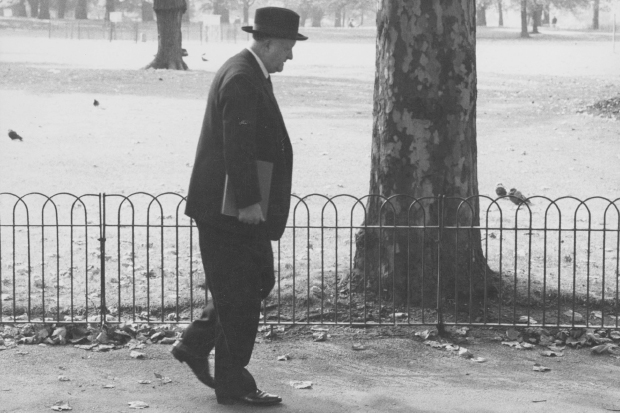The Silent Deep is a compelling and fascinating exposé of a service that for too long has had to remain in the shadows. Peter Hennessy and James Jinks are to be congratulated on producing what must be the definitive work on the Royal Naval Submarine Service from 1945 to the present day. In his inimitable way, Hennessy has gained unprecedented access all the way from able seaman to Prime Minister and been made privy to details that until recently were shrouded in secrecy.
His admiration and affection for the submarine service, his relish in being considered an honorary submariner, is clear; not least when he follows the make-or-break ‘Perisher’ course where candidates are tested to their limits for the exacting job of commanding one of Her Majesty’s submarines, or ‘boats’. (The term belies their lethal sophistication.) The tension and excitement of Perisher are palpable — it is the toughest such course in the world.
I noticed a number of pertinent, interrelated themes running through the book. First is the postwar development of quieter, more capable conventional submarines: the struggle to develop faster underwater speeds, and the convoluted processes that led to the fascinating realisation that only nuclear power would produce the first true submarines independent of the surface. Of critical importance was the United States’ role in enabling the production of the Royal Navy’s first nuclear submarine, HMS Dreadnought, launched over 50 years ago. Critical, too, is the continuing development of United Kingdom-designed nuclear attack submarines (SSNs) to the present day. For the first time in an easily digestible way the book highlights how the UK was at the very limit of what it could achieve in design and engineering capability.
The next theme is that of the nation’s deterrent and how the RN assumed the responsibility from the RAF in the 1960s with the Polaris missile system in the Resolution class ballistic missile submarine (SSBN). The authors reveal details of the top-secret Chevaline programme, embarked on without the knowledge of Parliament or indeed most in government. We see the decision-making process for the purchase of Trident and the D5 missile carried aboard the Vanguard class SSBNs. The book touches on targeting plans including the Moscow Criteria, and the principles of deterrence are clearly explained. The political shenanigans are laid out with a clarity I have never seen before. For anyone involved or interested in the forthcoming decision to replace our Vanguard class SSBNs this book is a must.
Another strand that weaves its way through the narrative is the most enjoyable stuff of Cold War drama, the real thing that movies like The Hunt for Red October gave a glimpse of. It is the covert war of aggressive intelligenc gathering by RN submarines against the Soviet Navy, initially by conventional submarines and then by SSNs. We can read of incidents and techniques that have been secret up till now. One can’t help relishing the details of terrifying collisions, never previously acknowledged, as these underwater leviathans fought a battle of stealth, operating by sound alone in the darkness under the Arctic ice and in the Barents and Norwegian seas.
The broader operational requirements for the submarine force are explained, and thus we see how nuclear submarines were the capital ships of the Navy by the early 1980s. Much is revealed about tracking Soviet nuclear submarines in the northern seas by means of SOSUS, the seabed arrays. Even to mention these a few years ago would have put one in the dock.With the new Nato Forward strategy in the 1980s our SSNs played a leading part in the military arms race. This kept the Soviets on the back foot, resulting ultimately in the collapse of the Soviet Union.
A whole section on the Falklands war answers many questions about our submarines’ vital role in that conflict, previously unknown to the general public. Here are the facts and decisions in the sinking of the Belgrano and an account of how close we came to sinking the Argentinian aircraft carrier Veinticinco de Mayo.
Alas, the catalogue of our failure over so many years to produce an effective torpedo sheds a bad light on our nation’s industrial base. Indeed, the fragility of so much of our industrial expertise in underwater warfare technology is grimly fascinating, and makes one very anxious. Have our leaders put the necessary resources into this crucial area of endeavour? What we clearly see is that building a nuclear submarine is more complex than putting a man on the moon.
It is obvious to me that Hennessy revels in the arcane lexicon of submarine tactics: de-lousing, clearing stern arcs, Crazy Ivan; and in much talk at the back bar of the Faslane submarine base. The authors have been into the farthest nooks and compartments of the submariners’ world: sea-riding the dreaded Perisher, crawling all over a Vanguard class in refit, witnessing the test firing of a Trident D5 missile, several dives in SSNs, visiting bases and the submarine building facility at Barrow; and, finally, discovering the nerve centre of the Trident firing chain in Pindar deep under the MoD main building. In conversation with David Cameron about the deterrent, we get his thoughts about having to write the letter to be opened by the submarine commander only in the unthinkable event that the leadership of the United Kingdom is wiped out in a nuclear attack.
Hennessy and Jinks have tracked the size, capability and decline of the Royal Navy’s submarine force from the end of the second world war. Starkly they show that we just don’t have enough boats to meet the tasks the nation demands of them. But what is most impressive, most heartening, is the quality and courage of our Royal Naval submariners, from those who remained at the end of the war to those serving today.
This meticulous history is no light read; but it is thoroughly rewarding, not just for submariners, who will love it, but for anyone with an interest in maritime affairs and grand strategy. There are riveting extracts to be mined for a wider audience, but for me it is a tour de force, a valuable resource for naval historians and future generations to wonder at. And I can’t help hoping that our current leaders will make themselves aware of some vitally significant issues that it raises.
Got something to add? Join the discussion and comment below.
Get 10 issues for just $10
Subscribe to The Spectator Australia today for the next 10 magazine issues, plus full online access, for just $10.
Available from the Spectator Bookshop, £25.50 Tel: 08430 600033. Admiral Lord West was First Sea Lord and Chief of the Naval Staff from 2002 to 2006.
You might disagree with half of it, but you’ll enjoy reading all of it. Try your first month for free, then just $2 a week for the remainder of your first year.














Comments
Don't miss out
Join the conversation with other Spectator Australia readers. Subscribe to leave a comment.
SUBSCRIBEAlready a subscriber? Log in